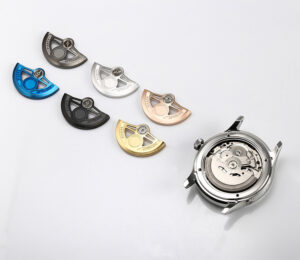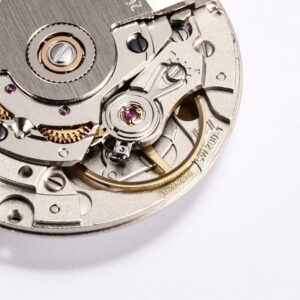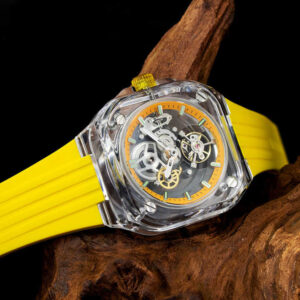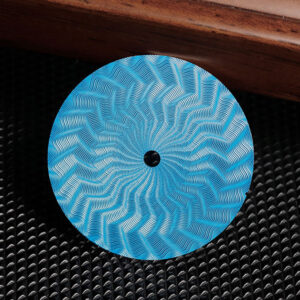Identifying Authentic Mechanical Movements: A Buyer’s Checklist
Mechanical watches represent the heart of traditional horology — precise, elegant, and entirely mechanical. Yet in today’s market flooded with replicas and hybrid watches, many buyers struggle with one question: how to know if a watch is mechanical?
This guide offers a simple yet comprehensive checklist to help you identify authentic mechanical movements and make confident purchase decisions.
1. What Makes a Watch Mechanical?
A mechanical watch runs purely on mechanical energy. It is powered by a mainspring, which stores energy when wound manually or through the motion of your wrist (automatic type). The energy travels through a series of gears, regulated by the escapement and balance wheel, resulting in the mesmerizing sweep of the seconds hand.
Unlike quartz watches, which rely on a battery, mechanical watches are self-sustaining, built to last decades with proper care.
| Type | Power Source | Seconds Hand | Maintenance | Lifespan |
|---|---|---|---|---|
| Quartz | Battery | 1 tick per second | Low | 5–10 years |
| Mechanical | Mainspring | Smooth sweep | Moderate | Decades+ |
| Hybrid (Kinetic/Solar) | Motion/Solar | Varies | Moderate | 10–20 years |
2. How to Know If a Watch Is Mechanical
Spotting a true mechanical movement isn’t difficult once you know what to look for. Here are the key indicators every buyer should check:
A. Smooth, Continuous Sweep
The easiest sign is the seconds hand. In a mechanical watch, it moves in a smooth, continuous motion rather than a sharp one-second “tick.” This sweeping motion comes from the high beat rate of the balance wheel — typically 18,000 to 36,000 vibrations per hour (vph).
B. Visible Movement
Most mechanical watches feature a transparent exhibition caseback, revealing the oscillating balance wheel or the automatic rotor. Look for intricate finishes such as Geneva stripes, perlage, and blued screws — marks of true craftsmanship.
C. Distinct Winding Feel
When winding the crown, you’ll feel gentle, tactile resistance — a signature of a genuine mechanical caliber. Quartz watches don’t offer this mechanical feedback.
D. Functional Precision
Authentic mechanical watches often include features like:
-
Hacking seconds (the seconds hand stops when setting time)
-
Power reserve indicators
-
Smooth time adjustment without jerky motion
| Movement | Beat Rate (bph) | Power Reserve (hrs) | Hacking |
|---|---|---|---|
| ETA 2824 | 28,800 | 38 | Yes |
| Sellita SW200 | 28,800 | 38 | Yes |
| Miyota 8215 | 21,600 | 42 | No |
| Seiko NH35 | 21,600 | 41 | Yes |
3. Advanced Verification Methods
If you want deeper confirmation, consider these professional checks:
-
Use a Timegrapher:
A timegrapher measures the beat rate, amplitude, and beat error of the movement.-
Ideal amplitude: 270°–310°
-
Acceptable beat error: under 0.6 ms
Consistent readings confirm a healthy and authentic movement.
-
-
Professional Appraisal:
A certified watchmaker can open the caseback to verify movement markings and serials.
Premium brands like Rolex, Omega, and Longines record movement numbers that match official production logs.
Look for COSC certification to confirm Swiss chronometer standards.
4. Red Flags for Counterfeit or Misrepresented Watches
Not all that glitters is gold — and not every “mechanical” watch is real. Watch for these warning signs:
-
Suspiciously Low Price:
Genuine Swiss mechanical watches rarely retail below $500. Extremely low prices are a major red flag. -
Unusual Lightness:
Authentic mechanical watches feel solid due to their dense inner components. If a watch feels unusually light, it may contain a quartz module instead. -
Poor Finishing:
Uneven engraving, plastic components, or misaligned complications signal low-quality imitations. -
Lack of Documentation:
Missing warranty cards, certificates, or brand booklets often indicate a counterfeit or refurbished piece.
5. Tips for Buying Authentic Mechanical Watches
-
Buy from Authorized Dealers or Trusted Resellers. Check official brand websites for verified distributors.
-
Request Serial Numbers and Certificates. Confirm details with the brand or COSC database when available.
-
Inspect in Good Lighting. Authentic watches display precision under magnification — from engravings to dial alignment.
-
Research the Model. Familiarize yourself with movement type, beat rate, and reference codes before purchase.
6. Why Mechanical Watches Are Worth It
Beyond telling time, a mechanical watch is a miniature masterpiece — an enduring work of engineering art. Its hundreds of components work in harmony, driven by pure mechanical energy. With proper servicing, a mechanical watch can last generations, carrying both value and heritage.
Conclusion
Understanding how to know if a watch is mechanical begins with observation — the smooth sweep of the seconds hand, the tactile winding feel, and the craftsmanship of the movement. Combine visual checks, simple tests, and professional verification to ensure authenticity.
When in doubt, buy from trusted sellers and value the craftsmanship behind every genuine mechanical watch — it’s more than a timepiece; it’s a legacy in motion.







